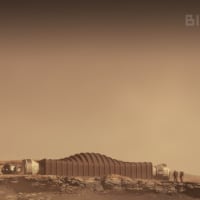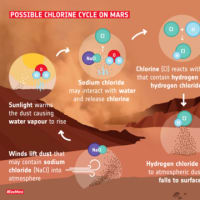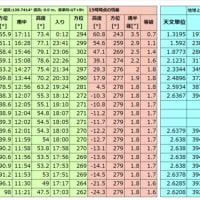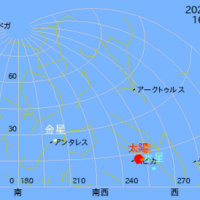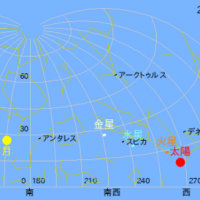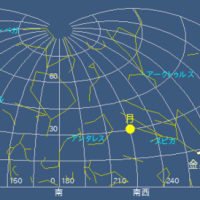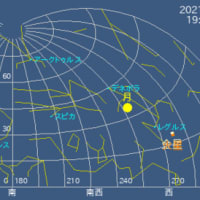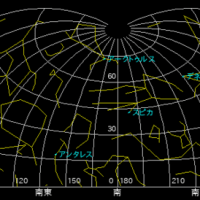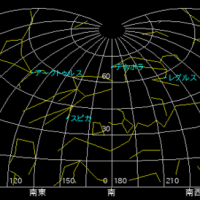1月19日にHI-SEAS V が始まってます。
今回は、8ケ月間です。さらに2018年にも8ケ月のミッションが計画されており、この2つのミッションは、キャンペーン3と位置付けられています。
キャンペーン3の目的は、チーム内の協力、調整、コミュニケーション、心理社会的適応が不適切なためにパフォーマンスが低下するリスクに対処することです。
HI-SEAS Vに関するハワイ大学の記事は、こちらです。
http://www.hawaii.edu/news/2017/01/09/hi-seas-mission-v-crew-preparing-to-enter-mars-simulation-habitat/
ロイターの記事は、こちらです。
http://jp.reuters.com/article/hawaimars-idJPKBN15707X
*メンバーに関する紹介をHI-SEASの記事から以下に引用します。
芸術家、宇宙飛行士志望&廃棄物削減、地下居住の研究家、農業&環境の専門家、火星への飛行のためのラグランジュ点推進剤貯蔵の研究、探検魂を持った執筆家など
多彩なメンバーですね。 (地下居住の研究に興味あります。)
 Laura Lark grew up on a small farm in unincorporated Whatcom County, Washington. Before joining the HI-SEAS Mission V crew, she spent 5 years as a software engineer at Google working on assorted flavors of search serving/indexing infrastructure. She is a graduate of Brown University, where she earned a B.S. in Computer Science and moonlighted as a unicycler. When not inhabiting a dome, she inhabits an apartment in New York City with her new husband and two cats. In her free time, she enjoys playing Irish fiddle tunes, sewing clothes and quilts, and practicing her crosswind landings. Laura is excited to walk around on a lava field in a spacesuit, to get to know her crew really well, and most of all to help people someday live on Mars! https://domeawayfromhome.wordpress.com/
Laura Lark grew up on a small farm in unincorporated Whatcom County, Washington. Before joining the HI-SEAS Mission V crew, she spent 5 years as a software engineer at Google working on assorted flavors of search serving/indexing infrastructure. She is a graduate of Brown University, where she earned a B.S. in Computer Science and moonlighted as a unicycler. When not inhabiting a dome, she inhabits an apartment in New York City with her new husband and two cats. In her free time, she enjoys playing Irish fiddle tunes, sewing clothes and quilts, and practicing her crosswind landings. Laura is excited to walk around on a lava field in a spacesuit, to get to know her crew really well, and most of all to help people someday live on Mars! https://domeawayfromhome.wordpress.com/
 Ansley Barnard is an engineer from Reno, NV. She is passionate about performance vehicles by land, air and space. Professionally, she enjoys solving multi-disciplinary problems in the aerospace and automotive industries. She has worked with NASA and Boeing on advanced composite structures. She also designed aerodynamic bodywork for cars racing in the 100th Indy 500. Prior to joining HI-SEAS, Ansley worked in engineering optimization at Ford Motor Company seeking to reduce weight, cost and engineering time.
Ansley Barnard is an engineer from Reno, NV. She is passionate about performance vehicles by land, air and space. Professionally, she enjoys solving multi-disciplinary problems in the aerospace and automotive industries. She has worked with NASA and Boeing on advanced composite structures. She also designed aerodynamic bodywork for cars racing in the 100th Indy 500. Prior to joining HI-SEAS, Ansley worked in engineering optimization at Ford Motor Company seeking to reduce weight, cost and engineering time.
Ansley hopes to serve as a US Astronaut in the future. She earned a BS in Aeronautics and Astronautics from the University of Washington. As a permanent crew member on our spaceship Earth, Ansley is interested in waste reduction and sustainable lifestyles. She hopes to use her skills in engineering optimization and efficient living during the HI-SEAS mission. Outside engineering, Ansley enjoys singing, live theater and cooking. She tests new recipes on her fiancé in their home near Detroit, MI. https://martianstandardtime.wordpress.com/
 Samuel Payler is a doctoral candidate at the UK Centre for Astrobiology, University of Edinburgh. He received an MSci in Geology at the University of Birmingham, with a year spent at the University of Hong Kong. His research involves a number of different areas, including examining life in hypersaline deep subsurface environments and understanding how to achieve high quality science within the logistical constraints and challenges imposed by human spaceflight.
Samuel Payler is a doctoral candidate at the UK Centre for Astrobiology, University of Edinburgh. He received an MSci in Geology at the University of Birmingham, with a year spent at the University of Hong Kong. His research involves a number of different areas, including examining life in hypersaline deep subsurface environments and understanding how to achieve high quality science within the logistical constraints and challenges imposed by human spaceflight.
Sam has been involved in and helped lead a number of analog programs around the world, including NASA’s BASALT (Biologic Analog Science Associated with Lava Terrains) program which examines the habitability of Martian analog basalts using simulated Mars mission conditions and MINAR (MINe Analog Research), a project that tests instrumentation designed for space in the deep subsurface and helps facilitate spin-off between the mining and space industries. He was also heavily involved in the establishment of Boulby International Subsurface Astrobiology Lab (BISAL), the world’s first deep subsurface astrobiology laboratory.
 James Bevington is a freelance researcher with a passion for anything science or space. His formal education is in agricultural engineering, environmental engineering, and space studies holding a BSc from the University of Tennessee, an MSc from the University of Georgia, and an MSc from the International Space University (ISU). Through his research, he has developed an expertise in statistical analysis and space life sciences. Currently, James is a visiting researcher at ISU and a consultant for the Tullman-Ercek lab at Northwestern University. His current research is developing biomanufacturing capabilities for future manned missions to Mars in collaboration with the Tullman-Ercek lab and investigating the potential for methanogen model organisms to be an explanation for excess methane on Mars via the MMARS1 project at ISU and UNISTRA. James was born in Louisiana but has lived in several locations both domestic and abroad. He enjoys discovering the diversity and similarities of new cultures. https://jamesonmars.wordpress.com/
James Bevington is a freelance researcher with a passion for anything science or space. His formal education is in agricultural engineering, environmental engineering, and space studies holding a BSc from the University of Tennessee, an MSc from the University of Georgia, and an MSc from the International Space University (ISU). Through his research, he has developed an expertise in statistical analysis and space life sciences. Currently, James is a visiting researcher at ISU and a consultant for the Tullman-Ercek lab at Northwestern University. His current research is developing biomanufacturing capabilities for future manned missions to Mars in collaboration with the Tullman-Ercek lab and investigating the potential for methanogen model organisms to be an explanation for excess methane on Mars via the MMARS1 project at ISU and UNISTRA. James was born in Louisiana but has lived in several locations both domestic and abroad. He enjoys discovering the diversity and similarities of new cultures. https://jamesonmars.wordpress.com/
 Joshua Ehrlich is a Systems Engineer for Lockheed Martin working test & verification on the Orion European Service Module. His previous job experience includes integration and test both on the SpaceX Falcon 9 launch vehicle and Veggie and Advanced Plant Habitat science payloads at NASA’s Kennedy Space Center. Prior work in research includes areas in advanced applications for composite materials, dual-axis wind turbine blade fatigue testing, and semi-closed cycle gas turbine systems. He has a B.S. in Aerospace Engineering from the University of Florida and an M.S. in Mechanical Engineering from Embry-Riddle Aeronautical University with a thesis defense focus on Lagrangian-point propellant depots for interplanetary missions to Mars.
Joshua Ehrlich is a Systems Engineer for Lockheed Martin working test & verification on the Orion European Service Module. His previous job experience includes integration and test both on the SpaceX Falcon 9 launch vehicle and Veggie and Advanced Plant Habitat science payloads at NASA’s Kennedy Space Center. Prior work in research includes areas in advanced applications for composite materials, dual-axis wind turbine blade fatigue testing, and semi-closed cycle gas turbine systems. He has a B.S. in Aerospace Engineering from the University of Florida and an M.S. in Mechanical Engineering from Embry-Riddle Aeronautical University with a thesis defense focus on Lagrangian-point propellant depots for interplanetary missions to Mars.
https://small-steps-giant-leaps.travel.blog/
 Brian Ramos is a Portuguese-American pursuing a life of exploration. He grew up in the small state of Rhode Island and holds dual engineering degrees in biomedical and electrical engineering. He is also a proud graduate of the International Space University, where he earned his Master’s degree in International Space Studies.
Brian Ramos is a Portuguese-American pursuing a life of exploration. He grew up in the small state of Rhode Island and holds dual engineering degrees in biomedical and electrical engineering. He is also a proud graduate of the International Space University, where he earned his Master’s degree in International Space Studies.
Brian’s professional experience ranges from project work at NASA’s Johnson Space Center to initiatives with Engineering World Health, repairing medical equipment in Rwanda and Nicaragua. He’s most comfortable outside of his comfort zone, has a healthy addiction to writing, and hops on a plane any chance he gets. At home, he enjoys learning new skills, including scuba diving and martial arts. He’s looking forward to this next challenge, and to sharing his experiences through his writing. thetravelingspaceman.com
---------以上、HI-SEASの記事から---------------------------
今まで、以下のミッションが行われてます。
Mission Ⅰ
2013年に4ケ月実施:食事の影響を調査
Mission Ⅱ
2014年に4ケ月実施:チームの結束とパフォーマンスを調査。3D-VRを利用して、家族や友人との面会による閉鎖環境の軽減を図った。
Mission Ⅲ
2014年から2015年にかけて8ケ月実施:チームの結束とパフォーマンスを調査。(同上)
Mission Ⅳ
2015年から2016年にかけて12ケ月実施:チームの結束とパフォーマンスを調査。(同上)
*今年の6月からは、火星協会のMras160が昨年のユタ州MDRSに引き続いて、北極で開始されます。
常冬と常夏の閉鎖実験が2ケ月ばかりかぶることになりますので、それも楽しみですね。










